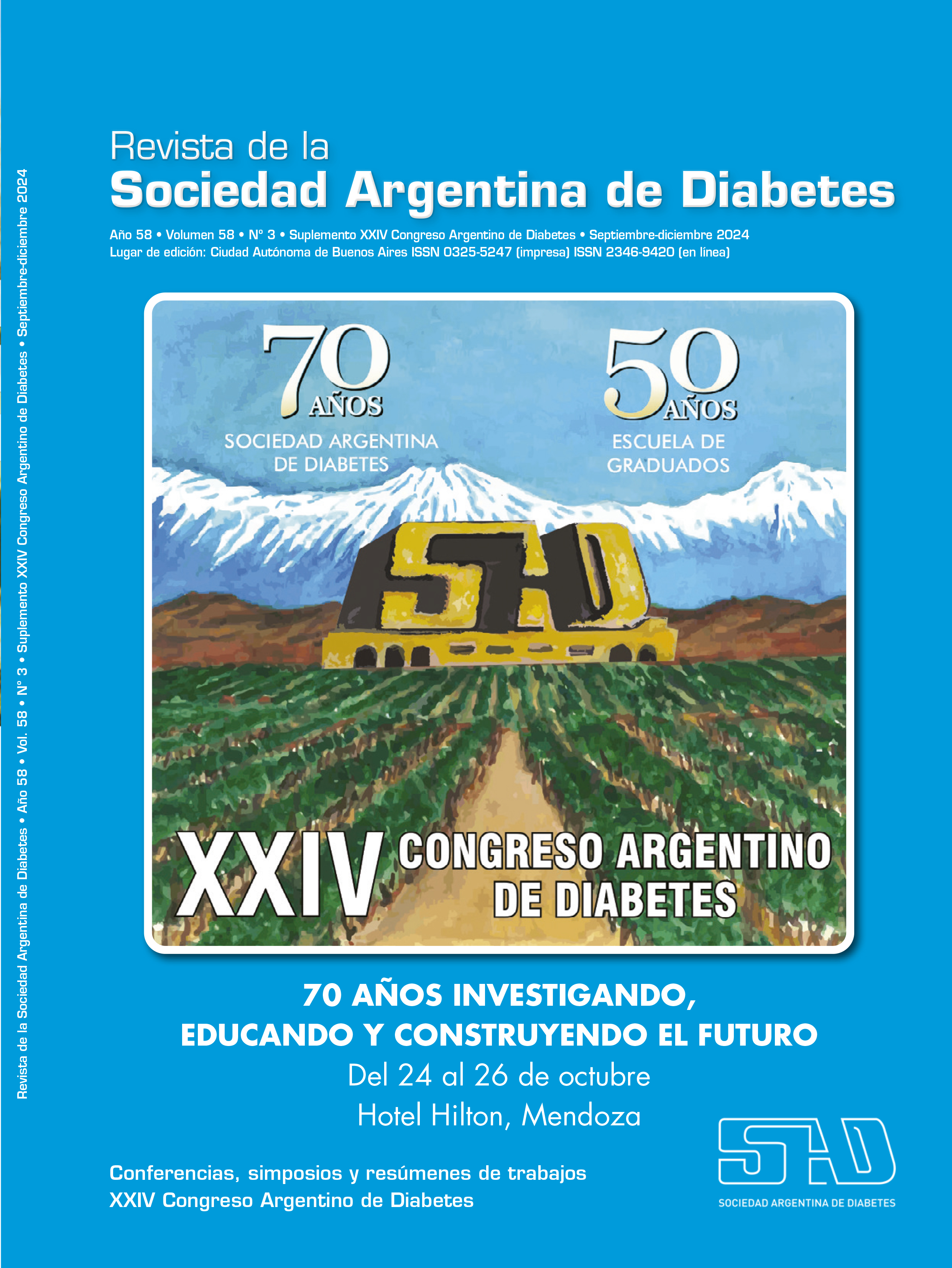When and in whom should the diagnosis be made?
Keywords:
diabetes mellitus type 1, diagnosisAbstract
In the last decade there have been important advances in the prevention and treatment of type 1 diabetes mellitus (T1DM). On the current horizon there are new intervention modalities in pre-symptomatic stages, such as immunotherapies and others, which become a window of opportunity to stop the progression of the disease.
Understanding the natural history of DM facilitates the identification of susceptible individuals in the preclinical phase of DM1 and their risk. of clinical progression.
Two recent trials reported positive results of disease-modifying therapies suggesting an opportunity to delay T1D with teplizumab or preserve residual β cells with oral verapamil. The recent approval by the Food and Drug Administration (FDA) The use of teplizumab for the treatment of early-stage DM1 meant a change in the paradigm from insulin replacement to disease modification.
In 95% of patients, anti-insulin autoantibodies, GAD (GAD65), tyrosine phosphatase (IA-2) and zinc transporter8 (ZnT8) are detected before the development of clinical DM1. More than 80% of individuals at risk for DM1 have signs of autoimmunity. The preclinical phases are considered part of the disease and are defined: a) stage 1, includes people with multiple autoantibodies and normoglycemia; b) stage 2, includes multiple autoantibodies and dysglycemia; c) stage 3 have overt clinical DM.
DM1 screening programs are a priority given the proven benefits of reducing diabetic ketoacidosis (DKA) at the onset of stage 3 DM1 and the availability of therapies to delay disease progression.
That is why an Expert Consensus was developed (2024) on indications for monitoring autoantibodies in at-risk individuals: a) family members and people who are IAb+; b) people who are IAb+ are confirmed with a second sample; c) individuals with a single IAb+ have a lower risk of progression vs. with multiple IAb+; d) people with early stage DM1 should undergo regular medical check-ups, with regular assessment of glucose levels, education about the symptoms of DM and DKA, and psychosocial support; e) people with stage 2 should be offered participation in trials or approved therapies.
More research should be conducted on early-stage T1DM to promote, increase the rigor of future guidance and clinical care recommendations in pre-symptomatic stages.
References
I. Limbert C, von dem Berge T. Personalizing early-atage type 1 diabetes in children. Diabetes Care 2023;46.
II. Phillip M. Consensus guidance for monitoring individuals with islet autoantibody positive pre-stage type 1 diabetes. Diabetes Care 2024;47(8):1-23.
III. Karpen SR, Dunne JL, Frohnert BI, et al.; Type 1 Diabetes Consortium. Consortium-based approach to receiving an EMA qualification opinion on the use of islet autoantibodies as enrichment biomarkers in type 1 diabetes clinical studies. Diabetologia 2023;66:415-424.
Downloads
Published
Issue
Section
License
Copyright (c) 2024 on behalf of the authors. Reproduction rights: Argentine Society of Diabetes

This work is licensed under a Creative Commons Attribution-NonCommercial-NoDerivatives 4.0 International License.
Dirección Nacional de Derecho de Autor, Exp. N° 5.333.129. Instituto Nacional de la Propiedad Industrial, Marca «Revista de la Sociedad Argentina de Diabetes - Asociación Civil» N° de concesión 2.605.405 y N° de disposición 1.404/13.
La Revista de la SAD está licenciada bajo Licencia Creative Commons Atribución – No Comercial – Sin Obra Derivada 4.0 Internacional.
Por otra parte, la Revista SAD permite que los autores mantengan los derechos de autor sin restricciones.




























